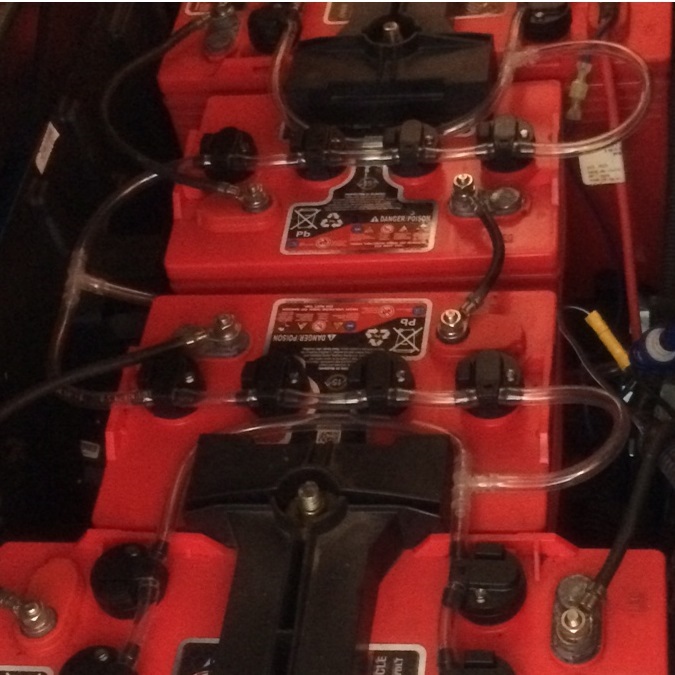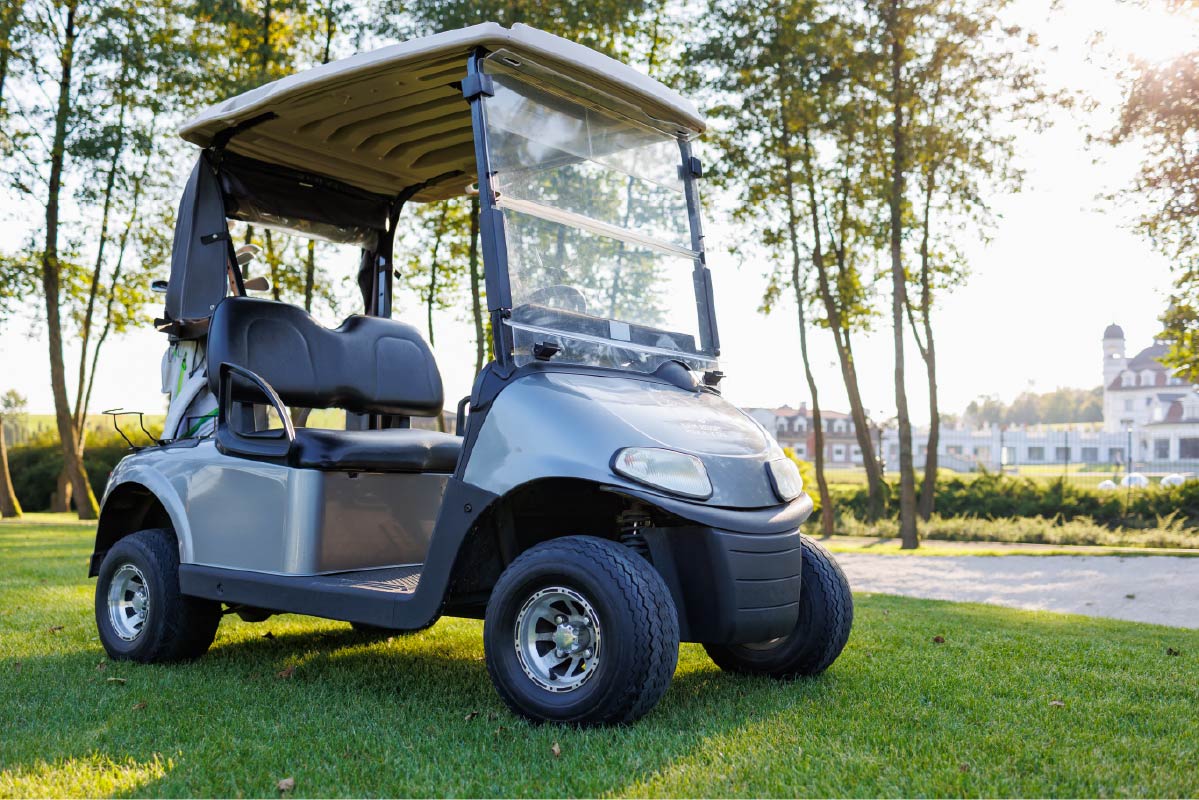Special Note – Golf Cart battery packs are required to work hard day in and day out so you should only use and install a quality deep-cycle battery that meets the specifications of your golf carts manufacturer. Using a car battery or truck battery in place of a true deep cycle battery is not the solution just because they are half the price.
With that said here are some major points to make sure you will get great performance and maximize the life of your golf cart’s battery bank.
Check the connections
If you just installed new batteries or had them installed. Double check connections before connecting your golf cart battery charger. Otherwise, battery and/or charger damage can result.
A full charge
New batteries should be given a full charge before putting them into service. even though they are new who knows how long they sat on a shelf or pallet prior to installation. Even we do this and we get battery deliveries weekly. You can also expect to see increases in capacity and run time from a new battery pack after 15-25 charge cycles as the lead cures internally. It is just not possible for a battery manufacture to cure the lead on each battery prior to installation. So new batteries will go through this process as you use them and charge/discharge the batteries over the first few months of service. Consult the manufacturer of your batteries for more information if so desired.
Do not excessively discharge your batteries
Excessive discharge can cause polarity reversal of individual cells resulting in complete failure shortly thereafter.
Electrolyte levels
Maintain the proper electrolyte level of wet (flooded) batteries by adding water when necessary. Distilled or deionized water is best for battery life. Never allow the electrolyte level to fall below the top of the battery plates. Electrolyte levels lower during discharge and rise during charge. Therefore, to prevent the overflow of electrolyte when charging, it is mandatory that water be added to cells AFTER they have been fully charged – do not overfill. Old batteries require more frequent additions of water than new batteries.
Sulfates
Hard crystalline sulfates form when batteries in storage are not maintained in a charged active state. Internal self discharge can bring about the start of this condition in as little as three days in warm temperatures. Batteries not maintained and allowed to sit in storage will self discharge, sulfate and lose capacity. Repeated charging without using the batteries between charges can recover some of the lost power, range, and life, but some permanent loss should be expected.
Temperature
Cold batteries require more time to fully charge. When the temperature falls below 65°F, the batteries should be placed on charge as soon after use as possible.
Clean tops
The tops of batteries and battery hold downs must be kept clean and dry at all times to prevent excessive self discharge and the flow of current between the battery posts and frame. Electrolyte spilled on bbatteries never dries or evaporates.
Maintain good connections
All connections to batteries must be maintained clean and tight. Due to heating and discharge rates, bolted connections loosen over time. Re-tighten the connections twice yearly to the torques specified by the battery manufacturers.
Read the instructions
Follow all operating instructions, cautions, and warnings as specified in this manual, on the charger, in the battery manuals, and in the vehicle manuals.
Beware frozen batteries
NEVER try to charge a frozen battery.








